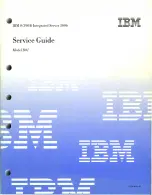
Media optimization
Media optimization is a new feature for the LTO-9 tape drive with L9/LZ media.
The increased number of tracks used to write data on tape requires greater precision. Media optimization creates a referenced calibration for each cartridge that enables
the tape drive’s intelligent alignment to optimize data placement. LTO-9 media optimization enhances LTO tape long-term media durability.
It is important to consider when media optimization will be performed:
Media optimization will be performed on first load of L9/LZ media during initialization.
Recommendation is to perform first load in the location of deployment, which should be in a stable environment that meets the recommended environmental
specification (see
Equipment environmental specifications
for details).
Media optimization is a one-time operation that can be completed on any drive in the environment, enabling the media to be used across all tape drives without
further optimization.
Other considerations for media optimization:
Media optimization averages 40 minutes per first load of a cartridge to a tape drive. Although most media optimizations will complete within 60 minutes some
media optimizations may take up to 2 hours.
Interruption of the process is not recommended.
A different mount will not necessarily improve the time to complete the one-time optimization.
An update to software may be required. Contact your software application provider for more details. Customized software, not provided as a standard market product,
may require modification to ensure that the software can handle the extended first mount time. For additional details, review the detailed section of the
Archive mode unthread
The time that is required for an unload depends on how the cartridge has been used during the mount. This is based on the current position and how far from beginning of
tape (BOT) the media has been moved since mount. For details on unload performance, see
.
Speed matching
The LTO tape drives perform speed matching to adjust the native data rate of the tape drives as closely as possible to the net host data rate (after factoring out data
compressibility). This approach helps to reduce the number of backhitch repositions and improves throughput performance.
Backhitching is the condition that occurs when a data cartridge stops, reverses, and restarts motion. A backhitch is the result of a mismatch between the data rates of the
connected server and the tape drive.
With speed matching, the drive operates at different speeds when it is reading or writing the Ultrium 7 or later cartridge format. Native data rates are shown in
.
If the server's net (compressed) data rate is between two of the preceding native data rates, the drive calculates the appropriate data rate at which to operate. Maximum
native date rate for half-height tape drives is 300 MB/s.
Table 1. Performance parameters
Ultrium Generation Media
Generation 9 media Generation 8 media Generation 7 media
Speed matching data rates (MB/sec) 284
306.4
306.0
263
273.0
287.52
244
249.5
268.56
223
226.0
250.66
203
203.0
231.86
177
180.0
213.06
-
157.5
194.26
-
135.0
175.46
-
112.0
157.67
-
-
138.52
-
-
120.11
-
-
101.46
Capacity scaling
You can control the capacity of data cartridges to obtain faster seek time.
To control the capacity of the cartridge, issue the SCSI command SET CAPACITY. For more information, see
IBM LTO Ultrium Tape Drive SCSI Reference
.
Channel calibration
6
TS2900 Tape Autoloader
Содержание System Storage TS2900
Страница 1: ...TS2900 Tape Autoloader IBM...












































